England’s Centuries-Old Fascination With Carving Giant Horses Into Hillsides
The country’s unbridled enthusiasm for the trend even inspired the creation of the term “leucippotomy.”
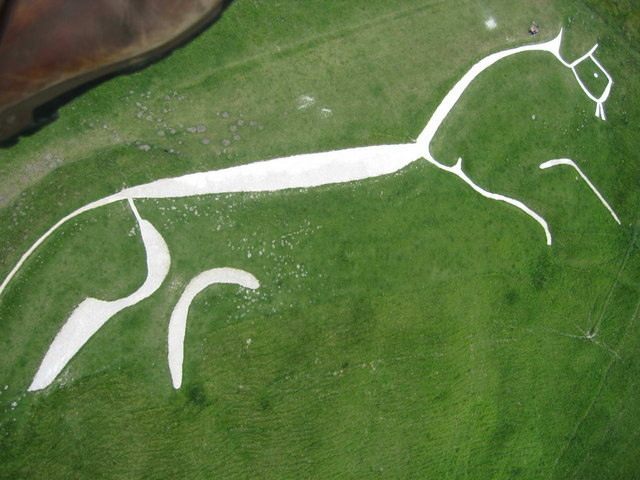
After an ancient carving of a horse appeared on a hill three millennia ago, giant white horses became a symbol of England’s southern region. Dozens of horse-shaped geoglyphs—massive figures made by cutting into a hillside to reveal the layers of chalk beneath—were created over the years. Many of these enormous equines still exist today, though the exact origins of the trend remain mysterious.
Most of these gigantic archaeological artworks are located in the country’s southern areas because of the breadth of chalk downland, or hills, that stretch across the region. The white geoglyphs stand in stark contrast to the verdant landscapes they dominate—so much so, they often had to be covered or camouflaged during World War II so the German Air Force couldn’t use them as location markers to aid navigation.
The chalk horses became so prominent they inspired Morris Marples, a mid-20th century author, to coin the term “leucippotomy” to describe the specialized art of carving white horses into hillsides. Britain currently has 16 known white hill horses, but it once had many more that were lost to years of neglect that caused their once-prominent profiles to fade from sight.

The Uffington White Horse, England’s oldest geoglyph, is 3,000 years old. It’s in the area where Saint George allegedly slew his allegorical dragon and is by far the most remarkable site of the 16. The 360-foot long figure was a well-established geological feature long before it first popped up in an 11th century historical reference. After nearby silt was dated in 1990, researchers discovered the ancient horse was originally cut during the Bronze Age.

Britain’s next known white horse didn’t make its enigmatic entrance onto the English hillsides until the 18th century. Like the Uffington White Horse, the Westbury White Horse’s origin is a mystery. One theory is that the figure was carved to commemorate King Alfred’s victory at the Battle of Ethandun, which most likely took place in a nearby location in the year 878. Others think the chalk creature was created to display loyalty to the House of Hanover, as a white horse was the heraldic symbol of this 18th-century royal family.

The Westbury White Horse spurred the creation of other similar figures, such as the Cherhill White Horse. This sedimentary steed was carved into a hillside near Calne in 1780 at the behest of Dr. Christopher Alsop, a “mad doctor” who used a megaphone to call his commands from a distance. During the 19th century, the horse sported an eye made from upside down glass bottles until souvenir hunters snatched the unusual ocular. The geoglyph’s current eye is made of stone and unfortunately no longer gleams in the sun.
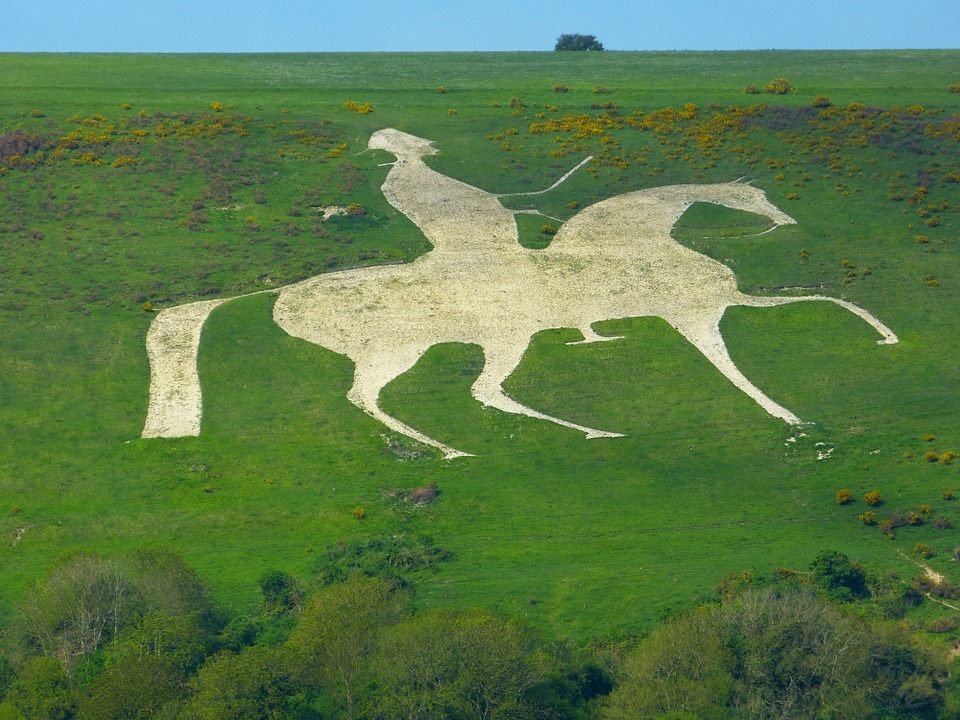
Just one of the 16 known hill horses actually has a rider. The Osmington White Horse is the only example to feature both leucippotomy and gigantotomy, the art of carving giant hillside humans. The massive mount was created in 1808 to commemorate King George III, who frequently visited the region. However, legend says the king was offended by the larger-than-life figure of him riding out of town, as he took it as a sign that the villagers were asking him to leave and never return. In 2011, pranksters adorned the horse with a unicorn-style horn made of plastic sheeting.
Maintaining the country’s scattered herd of chalk horses is no easy task. The figures need to be scoured regularly to prevent the surrounding vegetation from erasing them from view. Up until the 19th century, the ancient Uffington White Horse was maintained via festivals that drew crowds from multiple nearby villages. Now, various trusts and local groups are responsible for preserving the horses.
For some areas, it’s worth the effort. The county of Wiltshire boasts the highest density of equine geoglyphs and has since adopted the white horse as one of its beloved symbols. Some of the white horses even make cameos in music videos and television shows.
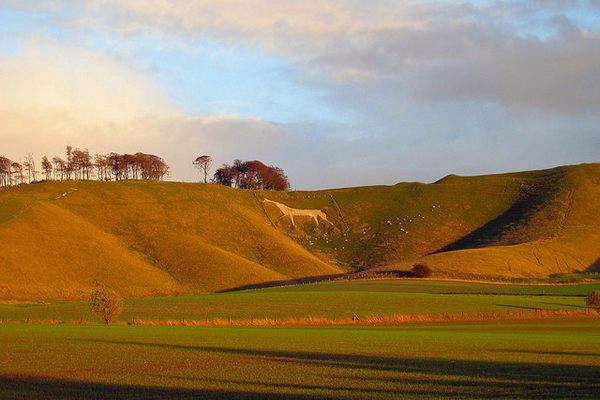
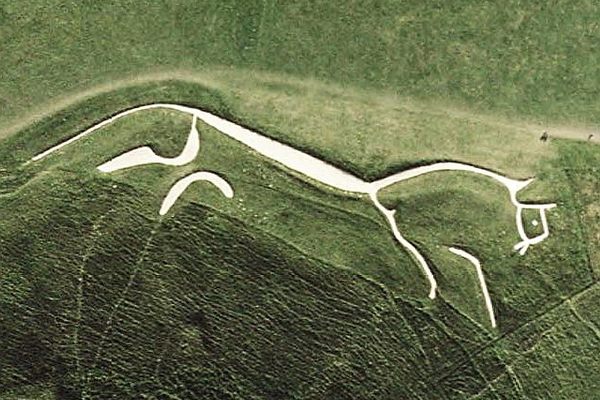
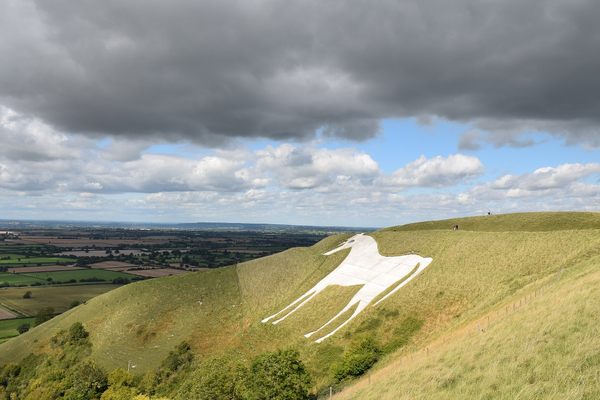




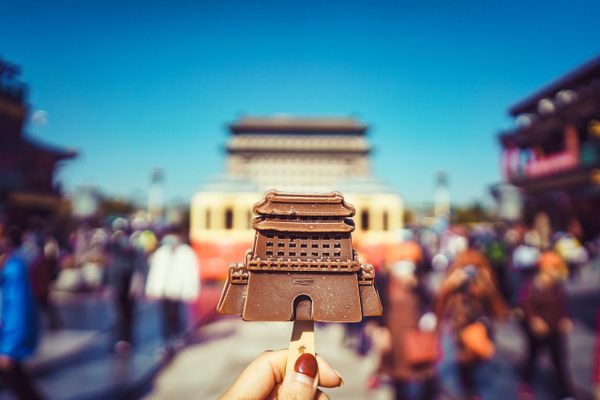


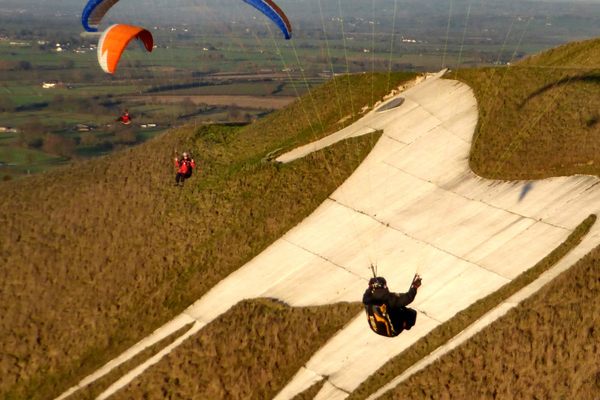














Follow us on Twitter to get the latest on the world's hidden wonders.
Like us on Facebook to get the latest on the world's hidden wonders.
Follow us on Twitter Like us on Facebook